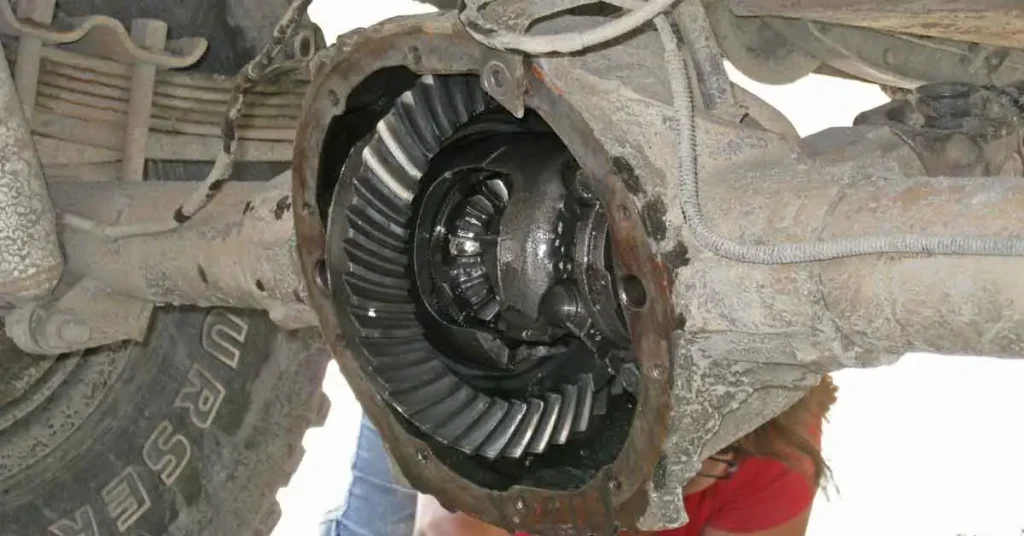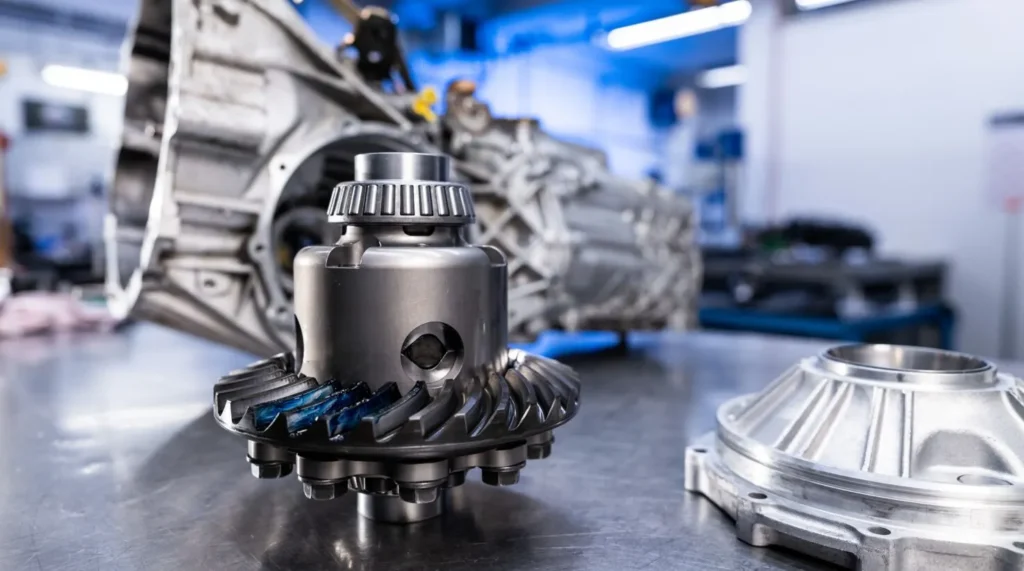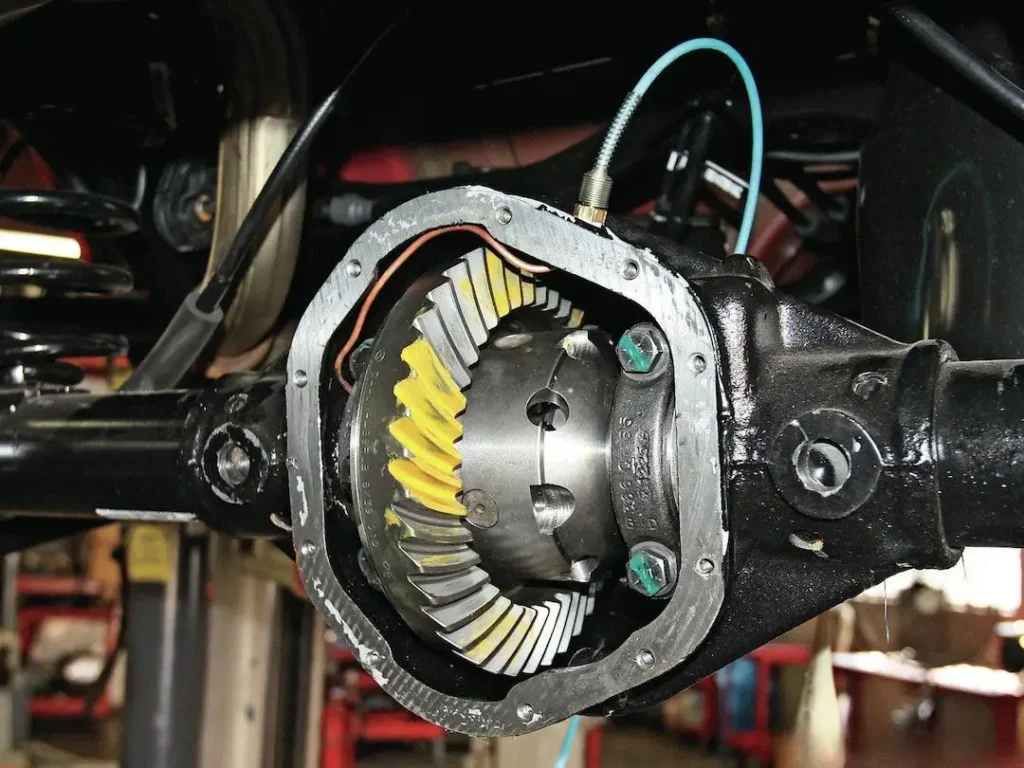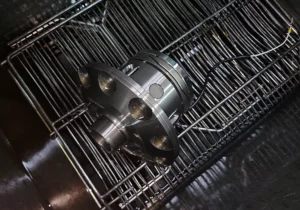When it comes to putting power to the ground, your differential isn’t just a piece of drivetrain hardware—it’s a decision that shapes your entire build. Whether you’re tearing up a track, crawling over rocks, or dialing in a dual-purpose setup, choosing between a limited slip differential (LSD) and a locking differential (locker) makes all the difference.
This guide breaks down the core differences between LSDs and lockers, highlights which is better for off-road versus track use, and helps you pick the right solution for your driving style.
What Is a Differential – And Why It Matters
A differential allows your wheels to rotate at different speeds—essential for cornering. Without it, turning would put major stress on your drivetrain and tires. The standard open differential does this well on dry pavement but falls short when traction is uneven. That’s where LSDs and lockers step in.
Limited Slip Differentials (LSDs) and Locking Differentials (Lockers) are performance upgrades that solve the shortcomings of open diffs, but they work in very different ways—and suit different kinds of driving.

LSD: Limited Slip Differential
- Clutch-type LSDs use clutch packs to engage torque transfer.
- Torsen and helical LSDs use gears to distribute power.
- Viscous LSDs rely on fluid resistance, though they’re generally outdated in performance applications.
LSD for Track Use
LSDs are a go-to for track and racing applications for several reasons:
- Smooth power delivery: LSDs don’t fully lock the wheels together, so transitions in grip are progressive.
- High-speed control: In corners, especially at high speed, an LSD lets each wheel rotate appropriately, preserving cornering balance.
- Better tire wear and stability during repeated laps.
LSD for Off-Road
LSDs can work off-road—but with caveats:
- They can’t always react fast enough when a wheel is fully lifted.
- Torque bias is limited. In extreme uneven terrain, one wheel might spin while the other gets very little power.
Pros
- Predictable on-road handling
- Ideal for high-speed corners
- Minimal driver input required
Cons
- Limited off-road traction in extreme situations
- Not fully locking
- Can wear out over time (clutch-type)

Locker: Locking Differential
A locking differential does exactly what it sounds like: it locks both wheels on an axle together so they spin at the same speed—regardless of traction conditions. There are multiple types:
- Manual lockers (air lockers, electric lockers) engage on demand.
- Automatic lockers (like Detroit Lockers) engage when a certain torque threshold is exceeded.
Lockers for Off-Road
Lockers shine when traction is unpredictable and uneven. Here’s why they’re the gold standard for hardcore off-road:
- True 50/50 torque split: Both wheels receive equal power regardless of terrain.
- Perfect for crawling, mud, snow, and steep climbs.
- Selectable lockers give you control—use it only when you need it.
Lockers for Track Use
Generally not recommended. Lockers can:
- Cause understeer and erratic handling
- Lead to wheel hop or break traction suddenly
- Increase tire wear drastically
Pros
Maximum traction in off-road environments
Can be engaged/disengaged (manual lockers)
Reliable in extreme conditions
Cons
Poor street and track manners
Noisy and harsh (especially auto lockers)
Increased tire wear on pavement

LSD vs Locker – Head-to-Head Comparison
| Feature | LSD | Locker |
|---|---|---|
| Street Driving | Excellent | Harsh when locked |
| Cornering (Track) | Predictable, smooth | Poor, can unsettle car |
| High-Speed Handling | Controlled, responsive | Risk of sudden traction loss |
| Off-Road Traction | Moderate | Maximum |
| Driver Control | Passive | Manual (air/electric) or auto |
| Maintenance | Moderate (clutch wear) | Low to moderate |
| Tire Wear | Lower | Higher when locked |
How to Choose the Right Differential
Choosing between an LSD and a locker comes down to intended use, driving style, and vehicle setup.
Ask Yourself:
- What do you drive more—trails or tarmac?
- Do you need high-speed stability or low-speed crawling power?
- How often do you need full traction vs. smooth handling?
For Track Builds: Go LSD. You’ll gain better corner exit speeds, predictable handling, and longer tire life.
For Off-Road Builds: Go with a manual locker like an air or electric locker for total control when you need it.
For Dual-Purpose Builds: Consider combining both:
- LSD in the rear for on-road performance
- Selectable locker in the front for off-road capability
When It’s Time to Upgrade
You’ll know it’s time to upgrade your differential if:
- One wheel constantly spins while the other does nothing
- You lose power exiting corners
- You hear excessive tire chirping
- Your off-road progress is halted by uneven traction
Explore Selectable Lockers: Air Lockers, E-Lockers, and More
Looking for the best of both worlds? Selectable lockers offer full control:
- Air lockers: Engage with onboard air systems—instant response, strong engagement.
- E-lockers: Electronically activated, simpler to install, reliable in wet conditions.
Final Thoughts
The right diff setup transforms your rig. LSDs bring balance and smooth performance for the street and track. Lockers deliver brute-force grip where it counts off-road. Pick based on how—and where—you drive. Or better yet, build a setup that gives you both.



